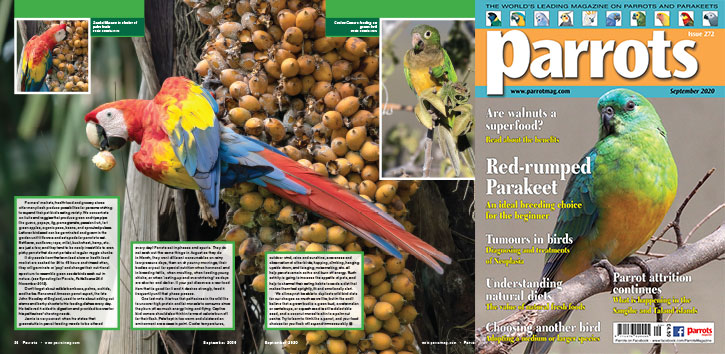
In this part II of Jamie Gilardi’s article on wild diets, he teams up with Eb Cravens who has always been an advocate of fresh natural foods
The only sure way to adequately reproduce a wild parrot diet with a captive psittacine would be to live in the bird’s native range, and release it daily to feed with others of its own kind. Rather impossible for most pet owners, right?
That being said, it is quite possible to make solid attempts at mimicking wild bird feeding tendencies with our domestic cage birds. In doing so, we must first recognise that what we are seeking is not so much a ‘wild’ diet, but a ‘natural’ diet. Feeding a natural diet means that every effort has been made to eliminate several processed foods from the food bowl. Not all such items are banished of course, since proper nourishment (with occasional relished people treats!) is the ultimate goal with any parrot. But where possible, it is best to replace processed substances with raw, natural foods.
First of all, we should consider just how most parrots and parakeets eat. Have you ever watched an African Grey or Sun Conure consume a shelled walnut? They hold the nut in a foot, or bend down over the dish in the case of species such as Eclectus or Regent’s Parrot, and slowly masticate the nut into a fine powder, consuming some, wasting much, and seeking out the important essential fats and oils. Unless they’re in a hungry hurry or feeding ravenous chicks, few parrots will take food or nuts in big chunks. Instead they chew and chew, deriving nourishment and moisture from the juices, oils, mineral-rich crumbs, chlorophyll, plant enzymes and the like. That is precisely why there is often so much detritus to be observed falling from a tree where groups of wild parrots are feeding. A softbill or non-seed cracking bird will ingest a whole guava seed. A psittacine will grind it to a pulpy mess. It’s almost as if parrots prefer ‘blenderised’ fare to a regular chunky meal.
